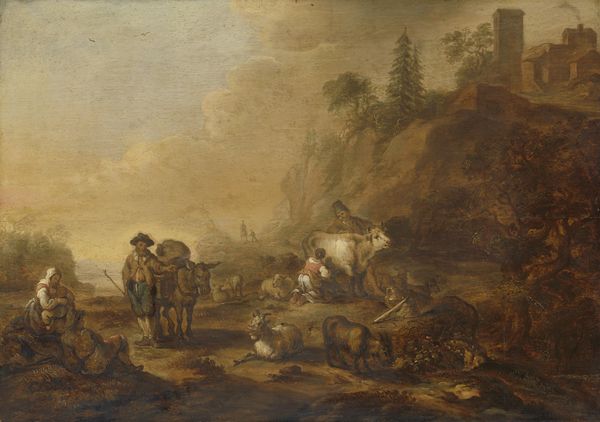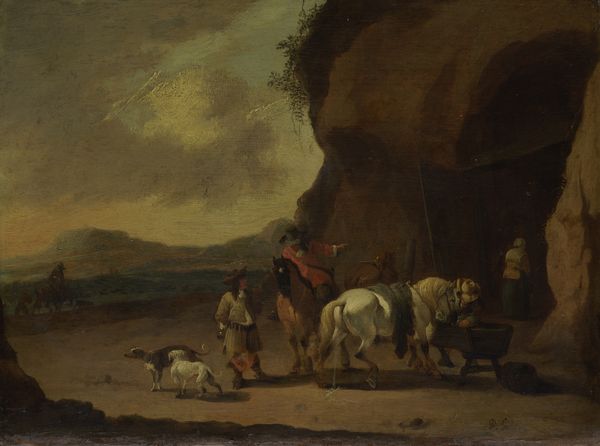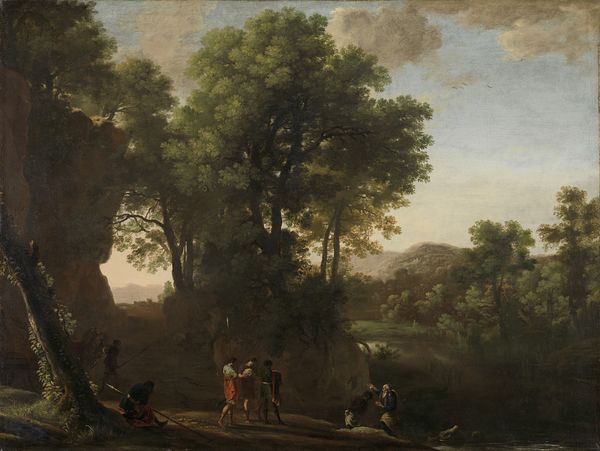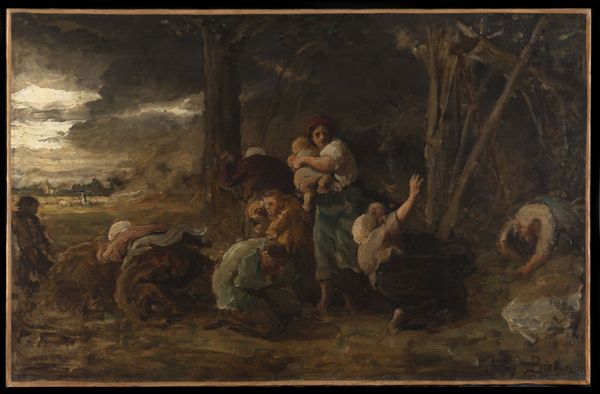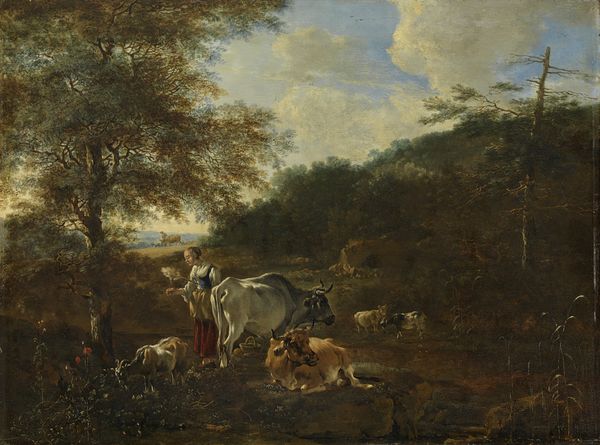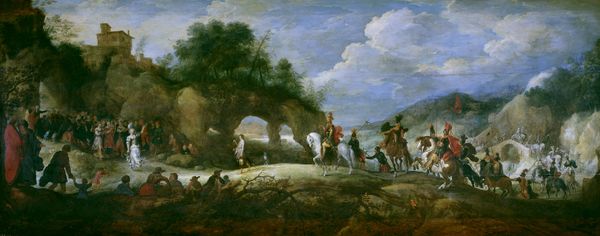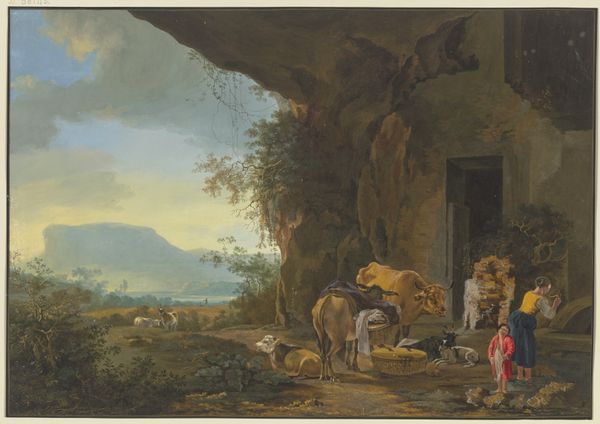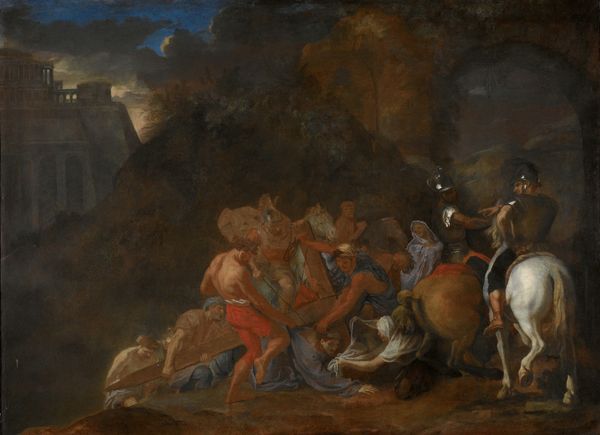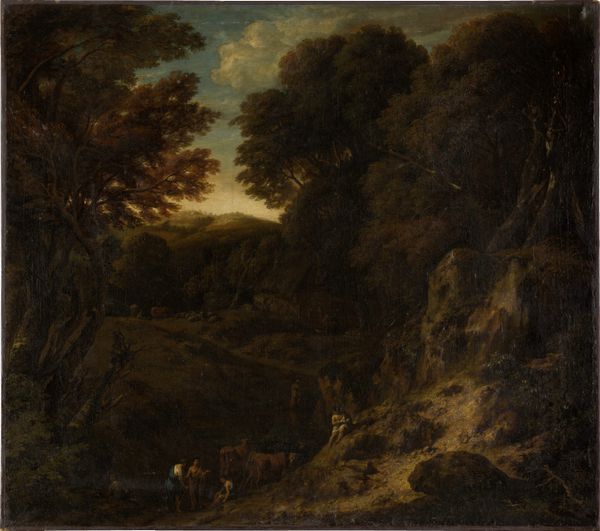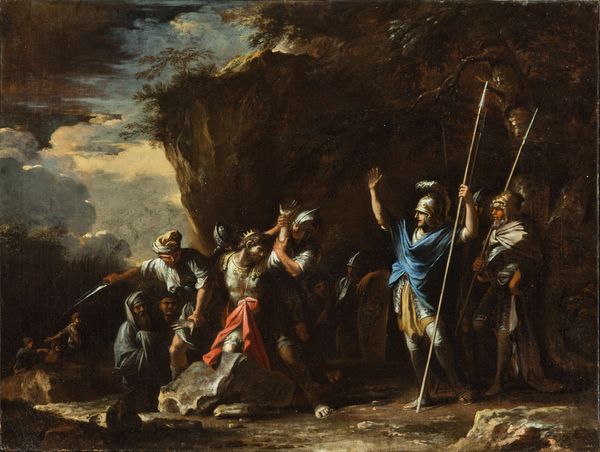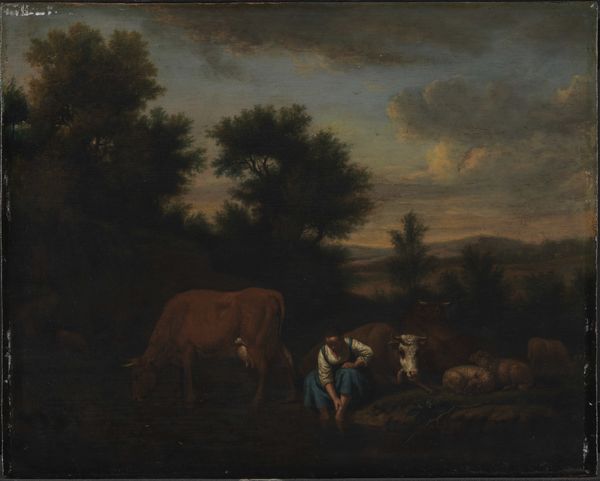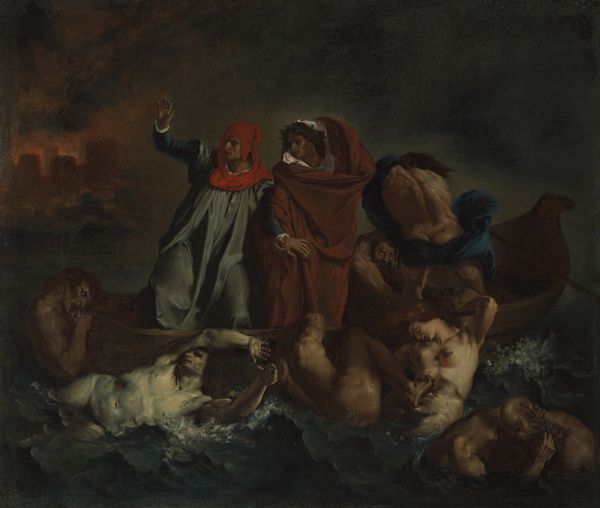
painting, oil-paint
#
baroque
#
painting
#
oil-paint
#
landscape
#
figuration
#
oil painting
#
genre-painting
#
realism
Dimensions: support height 29.3 cm, support width 43.5 cm, outer size depth 6.5 cm
Copyright: Rijks Museum: Open Domain
Curator: Here we have "A Shepherd and Washerwomen at a Spring" by Pieter van Laer, painted around 1630-1637. It’s currently housed at the Rijksmuseum. Editor: Immediately, the overwhelming darkness is what strikes me. It feels heavy, almost claustrophobic, yet there are these glimmers of activity. I’m particularly drawn to the textures of the garments—what kind of fabrics are depicted here? Curator: Van Laer, also known as Bamboccio, was central in popularizing genre painting of this type. This work reveals a scene of daily life, but think about it as filtered through the lens of class, gender and power dynamics. Editor: How so? I see people working. What I'm really curious about is the relationship between their labor and the materiality of their surroundings—the water, the roughspun clothing, the earth underfoot. How are these ordinary tasks ennobled, or perhaps degraded, by the artist's rendering? Curator: Precisely! Note how the figures of the washerwomen, engaged in labour by the water, are presented alongside the shepherd—presumably, the dominant social figure here. We need to consider their social status, gender roles, and perhaps question what appear as typical “daily life”. How does representation uphold or challenge this? Editor: You’re right, but I can't help but feel anchored to the materiality of it all. I see the labor—the sheer physicality of washing clothes in the open air, the raising of livestock. Consider, too, the pigments van Laer used. What were the sources, the trade networks involved? How does that labor get masked, or revealed, in the final painting? Curator: True, examining the pigments also opens up lines of inquiry into colonial narratives and global trade routes. The painting doesn’t simply depict; it’s implicated within socio-economic forces of its era. We cannot separate its aesthetic properties from its connection to the era. Editor: For me, this also reinforces the link between artistic creation and all other forms of making, all material engagements. This artwork, then, becomes not just an image, but a record of processes and human relationships with stuff, from start to finish. Curator: This deepens our understanding of historical representation and artistic expression beyond what is superficially apparent. I’m thinking about how our understanding impacts our interpretation. Editor: Exactly! By focusing on process and context, we hopefully invite visitors to engage critically with both the artwork and the world that shaped it.
Comments
No comments
Be the first to comment and join the conversation on the ultimate creative platform.
